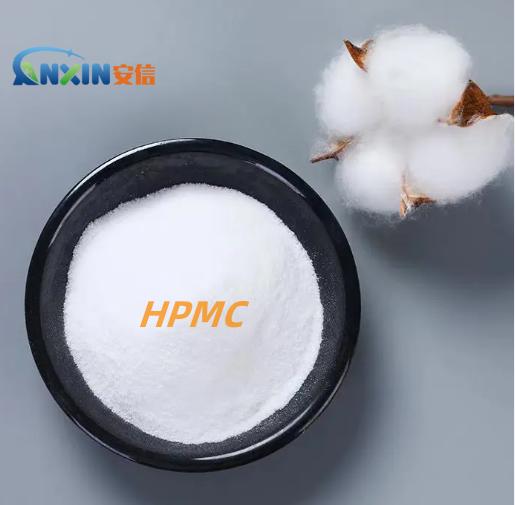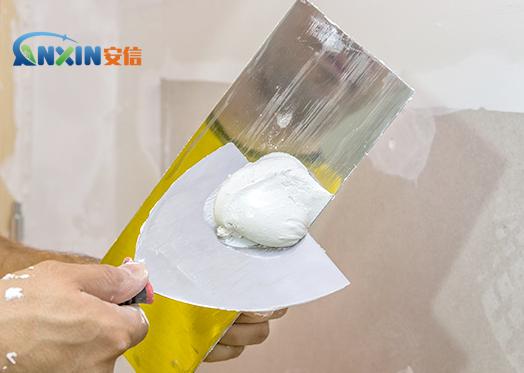Putty is an important building material used for wall leveling, and its performance directly affects the adhesion of the paint and the construction quality. In the formulation of putty, cellulose ether additives play a vital role. Hydroxypropyl Methylcellulose (HPMC), as one of the most commonly used cellulose ethers, can effectively improve the viscosity, construction performance and storage stability of putty.

1. Basic properties of Hydroxypropyl Methylcellulose
HPMC is a non-ionic water-soluble polymer with good thickening, water retention, dispersion, emulsification and film-forming properties. Its viscosity is affected by the degree of substitution, degree of polymerization and solubility conditions. The aqueous solution of AnxinCel®HPMC exhibits the characteristics of a pseudoplastic fluid, that is, when the shear rate increases, the viscosity of the solution decreases, which is crucial to the construction of putty.
2. Effect of HPMC on putty viscosity
2.1 Thickening effect
HPMC forms a high viscosity solution after dissolving in water. Its thickening effect is mainly reflected in the following aspects:
Improving the thixotropy of putty: HPMC can keep the putty at a high viscosity when it is stationary to avoid sagging, and reduce the viscosity when scraping and improving the construction performance.
Enhancing the operability of putty: An appropriate amount of HPMC can improve the lubricity of putty, making scraping smoother and reducing construction resistance.
Affecting the final strength of putty: The thickening effect of HPMC makes the filler and cementitious material in the putty evenly dispersed, avoiding segregation and improving the hardening performance after construction.
2.2 Effect on the hydration process
HPMC has excellent water retention properties, which can reduce the rapid evaporation of water in the putty layer, thereby prolonging the hydration time of cement-based putty and improving the strength and crack resistance of putty. However, too high viscosity of HPMC will affect the air permeability and drying speed of putty, resulting in reduced construction efficiency. Therefore, the amount of HPMC needs to ensure the workability while avoiding adverse effects on the hardening time.
2.3 Relationship between the molecular weight of HPMC and the viscosity of putty
The higher the molecular weight of HPMC, the greater the viscosity of its aqueous solution. In putty, the use of high-viscosity HPMC (such as the type with a viscosity greater than 100,000 mPa·s) can significantly improve the water retention and anti-sagging properties of the putty, but it may also lead to a decrease in workability. Therefore, under different construction requirements, HPMC with a suitable viscosity should be selected to balance water retention, workability and final performance.

2.4 Effect of HPMC dosage on putty viscosity
The amount of AnxinCel®HPMC added has a significant effect on the viscosity of putty, and the dosage is usually between 0.1% and 0.5%. When the dosage of HPMC is low, the thickening effect on the putty is limited, and it may not be able to effectively improve the workability and water retention. When the dosage is too high, the viscosity of the putty is too large, the construction resistance increases, and it may affect the drying speed of the putty. Therefore, it is necessary to select the appropriate amount of HPMC according to the formula of the putty and the construction environment.
Hydroxypropyl methylcellulose plays a role in thickening, water retention and improving workability in putty. The molecular weight, degree of substitution and addition amount of HPMC will affect the viscosity of putty. An appropriate amount of HPMC can improve the operability and water resistance of putty, while excessive addition may increase the difficulty of construction. Therefore, in the actual application of putty, the viscosity characteristics and construction requirements of HPMC should be comprehensively considered, and the formula should be reasonably adjusted to obtain the best construction performance and final quality.
Post time: Feb-10-2025